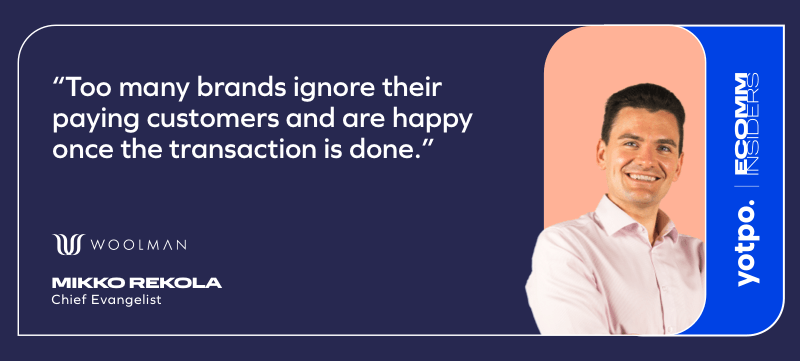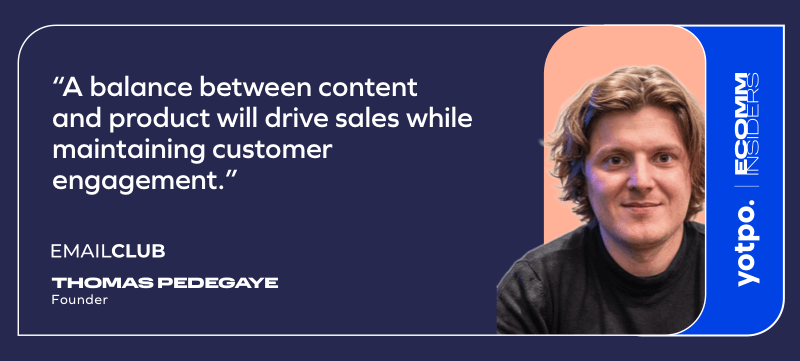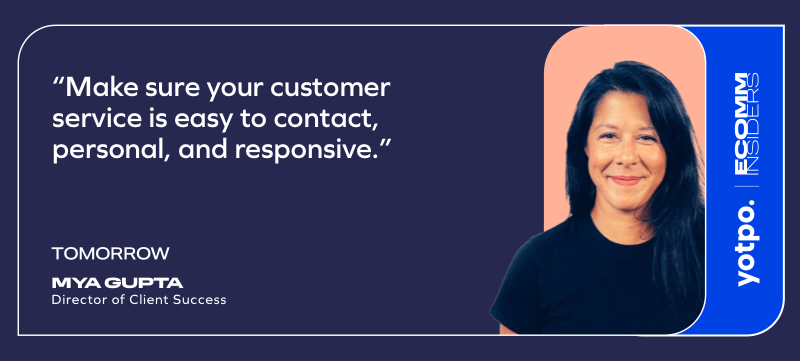Retention is a huge focus for most brands right now, but that doesn’t mean they’re succeeding with it. Our State of eCommerce Survey showed that while 52% of brands are more focused on retention than a year ago, over 40% haven’t made any changes to their strategy. Further, 70% said that their retention rate has either stayed the same or gotten worse. Why are there such big gaps in those numbers? Because retention is complex.
We asked the eComm Insiders — experts from award-winning eCommerce agencies and tech solutions who have driven innovation for the biggest brands in eCommerce — what mistakes they see brands making the most when it comes to customer retention. Here’s what they had to say.
1. Treating conversion as the end goal

Conversion is important to any brand, but if you want your first-time customers to come back, you need to give them a reason to do so. That means doubling down on creating a stellar post-purchase experience.
“Overall, too many brands ignore their paying customers and they are happy once the transaction is done. I would recommend full customer journey mapping including everything that happens after the purchase and prior to the next order.” — Mikko Rekola, Chief Evangelist at Woolman
2. Making everything a hard sell

When it comes to ongoing communication with your customers — whether it’s email, text, or social posts — don’t make every message a product push. Think about what will really provide value to the customer, like educational content and loyalty program updates, and add them to your calendar along with product promotions.
“A fine balance between really interesting content and product focuses will drive sales in the long run while maintaining customer engagement.” — Thomas Pedegaye at EmailClub
3. Sleeping on customer service

It doesn’t matter how great your product is if the customer experience is lacking. Ensure that customers can get their questions answered and problems resolved easily, and through the channels they prefer.
“An area that is often overlooked is customer service. Make sure your customer service is easy to contact, personal, and responsive. Poor, unresponsive customer service is a surefire way to lose even the most loyal customer. Ensure you have a FAQ section that is up-to-date and easy to navigate.” — Mya Gupta, Director of Client Success at Tomorrow
4. Having a painful returns process

No brand likes returns, but removing friction from the process can go a long way toward ensuring that a customer shops with you again. A customer making a return isn’t necessarily a customer that won’t come back — but their returns experience could be the deciding factor.
“A standout point for me is returns, particularly in fashion. Return rates typically sit anywhere between 25-40% for a typically premium fashion brand. Erasing the barriers to returning an item and creating a pain-free experience, that isn’t off-putting to a customer, is incredibly important. There’s plenty of opportunity to offer boosted credit (as opposed to a cash refund), product exchanges, and a plethora of really strong solutions that can accommodate for this. — Conor Jones, eCommerce Solutions Specialist at Vervaunt
5. Failing to set the right expectations

Giving customers an idea of what they can expect from your brand upfront can help you to manage customer expectations. Whether it’s giving realistic timelines for shipping and delivery or letting them know how long it will take for a customer service agent to get back to them, setting the right expectations and then delivering on them will boost brand trust and make the customer more likely to return.
“Brands sometimes try to be something they are not. For example, a fast-growing brand with a small team might try to behave the way a very large established brand does. But that backfires, causing confusion in customer expectation vs. the service the brand can realistically provide. I encourage our brands to embrace their story, including the limitations — and connect with customers by setting expectations upfront. If you are a small but mighty team, proactively let customers know that and set the expectation for when you will be back with them. Humanizing the customer experience can really help brands with retention and loyalty!” — Pallavi Malhotra, Sr. Partner Manager at Gorgias
To learn more about how these eComm agencies and tech integrators drive growth and retention for leading eCommerce brands, check out these award-winning success stories with Yotpo brands.



